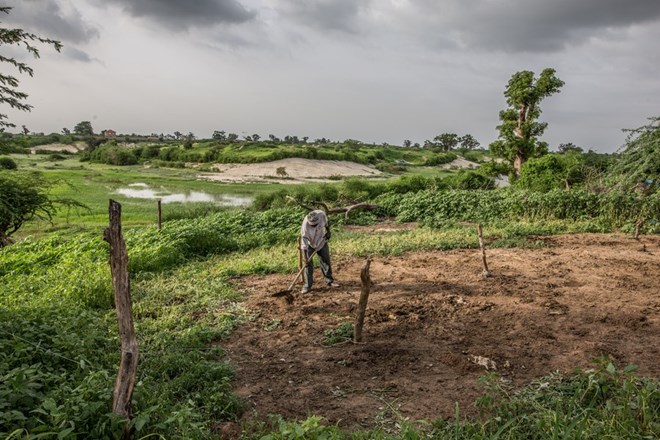“Alone, we go fast, but together, we go further,” remarked Marcelin Sanou, a member of the African project Great Green Wall, emphasising the need of international collaboration in battling desertification.
Sanou, the Pan-African Agency for the Great Green Wall’s chief of planning, monitoring-evaluation, and information management, made the statements during the 3rd Taklimakan Desert Forum, held from Saturday to Monday in Korla, northwest China’s Xinjiang Uygur Autonomous Region.
Over 180 scholars from 14 nations and regions convened at the meeting to discuss ways to successfully avoid land deterioration and desertification, particularly in the Sahara Desert and the Taklimakan Desert, both of which are among the world’s biggest deserts.
The African Union initiated the Great Green Wall programme in 2007, with the ultimate goal of planting a wall of trees across Africa at the southern end of the Sahara Desert. It is an African-led initiative to rehabilitate Africa’s devastated environments.
According to Sanou, the Sahel area, which is located on the southern edge of the Sahara Desert, has long suffered from desertification, and one of the Great Green Wall’s primary aims is to avoid desertification via international collaboration.
Diop Souleymane, chief of the geographic information system and database at the Pan-African Agency for the Great Green Wall’s secretariat, believes that China has made tremendous efforts to combat desertification, and that Africa can learn from them to better address issues of sustainable development and climate change.
According to Jia Xiaoxia, programme officer of the UN Convention to Combat Desertification (UNCCD), the UNCCD is working hard to assist impacted countries in developing science-based decision-making.
“We need to work together to improve scientific understanding, share knowledge and technology, and build capacity to act,” Jia added.
For more than 60 years, the Taklimakan Desert, China’s biggest desert, has been at the forefront of sand control and desertification research by Chinese experts. There, practises such as desert shelter trees and sand-control barriers have been effectively applied.
Zhang Yuanming, head of the Chinese Academy of Sciences’ Xinjiang Institute of Ecology and Geography (XIEG), expects to “develop desertification control technologies suitable for Africa” and boost China-Africa green development cooperation based on joint research.
Sanou stated that the Pan-African Great Green Wall inked a memorandum of understanding with the XIEG in 2017 to strengthen collaboration in sand management due to China’s unique experience in sand control and battling desertification.
According to him, such engagement allows China and Africa to share experiences and help each other in green growth.
According to Yang Wenbin, secretary-general of the China National Sand Control and Desert Industry Society, China and Africa might enhance collaboration in sand control for highways and railways, groundwater replenishment, and high-value ecological sectors in the future.
“Other than African countries in the Sahel region, we are also happy to engage in green cooperation in the Arab and Central Asian regions,” Yang added.
Ethiopia’s state minister of irrigation and lowlands, Endrias Geta, told Xinhua that China’s help for the Great Green Wall is making a considerable area of land livable again. “This Chinese government support has resulted in the rehabilitation of millions of hectares of land,” he stated.

